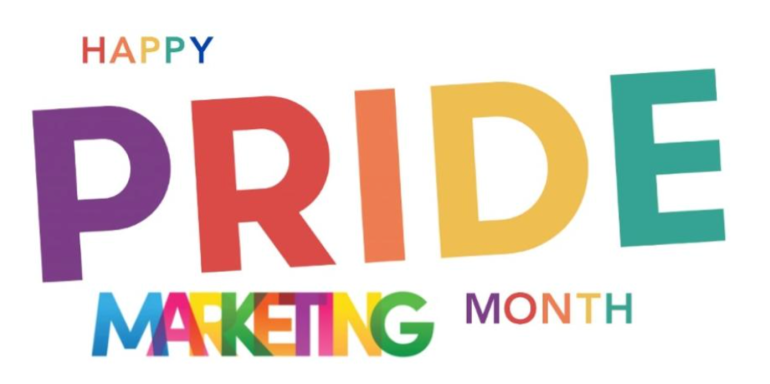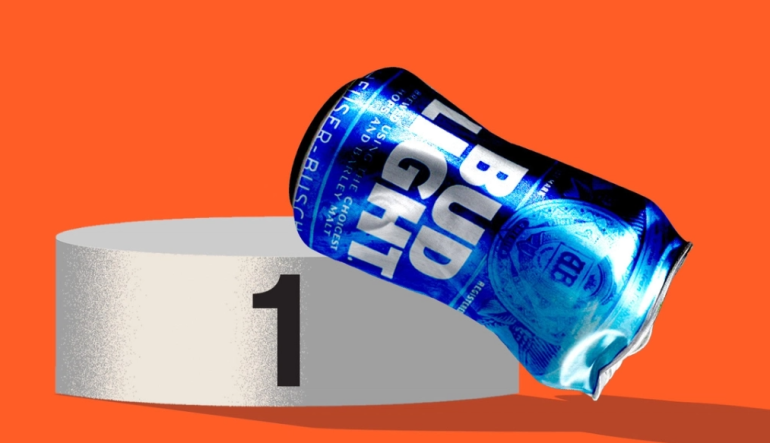Last year, there was a huge uproar when Budweiser (AB InBev) came under fire from Christian conservatives in the US. Reason? One of the influencers they hired was a transgender person.
A year has passed, but the Bud bang is still ringing. Companies are shocked and hesitant to implement their rainbow marketing. For example, this year there was much less attention for Pride Month (June) than usual. But is this hesitation justified?
The 4 Billion Woman
The reactions to the video were not bad. The video was picked up by right-wingers and it quickly escalated into a ‘message of the day’ that lasted for weeks. Attention everywhere, but a lot of smear campaigning and announcements of a boycott. Now, in practice, the latter often has a positive effect, but in this case it went wrong. Sales dropped, ABInBev lost 4 billion in stock market value, the brand took a dent and Bud itself responded so lukewarmly and cowardly that even the left wing of society, eh, ignored them.
In my article “The 4 Billion Woman” I described what happened. In short: Bud regularly sends personalized cans of beer to influencers, which the influencers then show on their socials. Trans woman Dylan Mulvaney was one of them. She has 10 million followers on TikTok and 2 million on Instagram: the posts about her transition were viewed more than 1 billion times. So: a nice reach in a niche market.
In her video Mulvaney used the beer to both March Madness to celebrate her first year as a woman. And that was the beginning of a scandal.
Bruce Glikas/WireImage
Get woke, get broke?
It is a now almost worn-out slogan with which the conservatives in society want to object to modernities such as freedom, equality and brotherhood. And of course to everything that has to do with the rainbow. I wrote about Get Woke Go Broke for Frankwatching earlier, with the conclusion that social awareness among marketers and brands is growing stronger. The social media trolls may sputter – usually in vain – but it still hurts. And in the case of Bud much more than that.
The Mulvaney video caught the attention of rapper Kid Rock (who proceeded to shoot cans of Bud with a machine gun), Republican career hater Marjorie Taylor Greene (who vowed to drink only Coors beer, a brand that has been an ally of LGBTQ+ since 1978), a dumbass in Kansas (who made a mess of a supermarket with trays of “Busch Light” – oops, wrong brand), and finally Fox News (and you know what I mean). The spiral was culminated in a response from the White House.
Of course, this could not remain without consequences. Where AB InBev dealt with the incident very dully by stammering, half-hearted apologies and sending a few managers on ‘leave’, the stock market reacted with a panic reaction. Some four billion in value went up in smoke. That is quite a lot for an ‘external’ video of 48 seconds.
Warning
The drama was widely seen as a warning that a brand should be careful with sensitive topics. And sensitive, that is Marketing the Rainbow also still. Recently I was on the Pride Panel of Publicis’ Adsterdam Festivaland there too the Bud story was cited as “how not to do it”. Where last year the brands were still climbing over each other to promote their rainbow products and support, this year it was a lot quieter.
But Adage reported in May under the headline “Why Pride Month Marketing Is Quieter This Year and How Brands Can Avoid Backlash” that there was more at play: “In an election year and amid growing culture clashes in the U.S., marketers are also challenged by global conflicts, such as the war between Israel and Hamas.” Brands also started their campaigns later than usual.

This Pride Month was compared to that of 15 years ago, when everything was still in its infancy. Other expressions of DE&I, such as Black History Month had to suffer from the “umbrella of woke“ said Rana Reeves, CEO of RanaVerse, an agency focused on connecting brands with popular and contemporary culture.
So what now?
There is enough brooding about it in the press. Adformatie wrote in August ’23: “Why there are fewer big brand campaigns for Pride Amsterdam 2023”. ABC News reported: “These Companies Kept Promoting LGBTQ Advertising Despite the Risk of Consumer Boycotts,” which my colleague Mike Wilke of AdRespect (NY) spoke at length. He said, among other things, that companies are planning most of their campaigns and media spending a year in advance, so that movement is still going, albeit somewhat slowed down.
Hilton, North Face, Delta Airlines, Maybelline and Amtrak stood out this year for their rainbow marketing. Levi’s has even made the LGBTQ community and its concerns a more important part of its advertising footprint — but had “no comment” to ABC. CNN reported that AB InBev lost around 1.4 billion in turnover, but the company did release record figures for 2023.
An event like Bud’s does impact brands’ planning, but at the same time, they can’t ignore their Gen Z consumers. This is a generation that is highly sensitive to ‘woke’ and social engagement from brands. According to Gallup 1 in 5 Gen Zers now identify as LGBTQ (especially the Q), and 1 in 10 Millennials do too. Compare that to 3% of Baby Boomers. Galileo’s LGBT Capital estimated the global purchasing power of LGBT people at about $4.7 trillion (that’s 12 zeros). Not crumbs, indeed.
Boycots
But as so often happens, scandals and boycotts also had the opposite effect. Bud got a lot of publicity (earned media is almost impossible to calculate), but most of it negative. On top of that came the dent in the market value, brand value and also in the market share.

(c) Hannah Minn/Morning Brew
A year later, AB InBev’s share price is 20% higher than before the incident, while the market rose by about 15%. The Mulvaney effect is no longer visible, at least financially. Bud Light was the market leader in its segment for 20 years, but lost that position to Modelo. Up until February of this year, they won back 1.2% of the market share, and that is increasing by about 0.2% every month. Harvard Business Review writes that the return of the brand is slower than with other boycotts. The bang was so hard that retailers also started to make less space in the store for Bud Light, which of course amplified the effect.
Incidentally, this shift in the Brewski hierarchy has been coming for years: Bud’s share has fallen from 19% to 10% in the past decade. American drinkers are increasingly drawn to Mexican imports. Modelo, a Mexican lager, was already on track to surpass Bud Light next year. So the boycott has only accelerated matters, the Wall Street Journal reports.
Interesting detail: AB InBev actually owns Grupo Modelo – the Mexican brewery that makes Modelo and Corona – everywhere except in the USIn 2013, as part of an antitrust agreement, they sold the US rights to Modelo to Constellation Brands.
In addition to losing its place as America’s best-selling beer, the brand also lost its first female VP, Alissa Heinerscheid, as a result of the prolonged boycotts.
Handle rainbow marketing with care
Be careful with rainbow marketing, but definitely include it in your media and campaign planning. There will probably be some resistance here and there – less in the Netherlands than in the US – but the negative long-term effects of this are negligible, while the positive ones can stick to your brand. If it is a risk, you should take it: there is a lot to gain. And maybe you can still do a lot earned media with a very turbulent campaign. Also consider Suit Supply of the ‘forbidden’ advertising from Central Management.
Alfred Verhoeven is in the final phase of his PhD research Marketing the Rainbow. He previously published about this for Frankwatching a series of relevant articlesincluding Get woke, go broke, Dutch Rainbows, The Oldest Rainbows, From representation to respect, Super Bowl-advertenties: What Would Jesus Do?, Gay humor in commercials, in Forbidden Fruits: The (Gay) Ads That Didn’t Go Unnoticed.
Source: www.frankwatching.com


